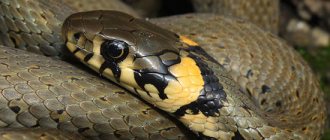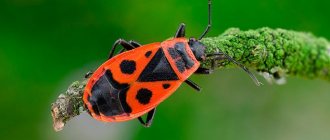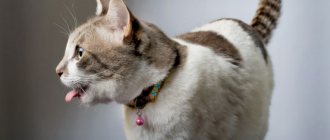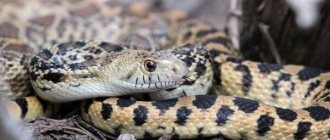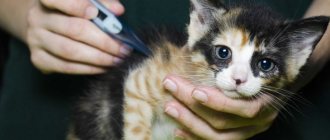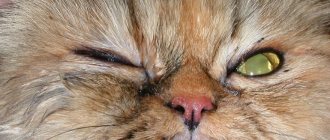The water bug is one of the numerous inhabitants of various bodies of water, which are characterized by slow flows or standing water. Their population can be found all over the world. These insects belong to the category of predators that feed on weaker individuals living in water.
The presence of a water bug in a reservoir makes it possible to effectively regulate the number of small insects. They can also prey on larvae laid by mosquitoes, which can help reduce mosquito populations. These insects are most active in the summer, spending almost all their time in the water.
Are encounters with water bugs dangerous?
Generally speaking, an ordinary “Russian” smoothie is not a very aggressive bug, and it is unlikely that the crazy thought of attacking a person will occur to it
. But when people, neglecting basic caution, decide to pick up an insect in their hands, it will immediately respond with a burning injection, which will feel for a long time. It is mainly the most curious and fearless children who suffer from water bug bites.
The giant water bug is also not inclined to prey on people, but it happens that swimmers bitten by the white stoma jump out of the water with their faces twisted in pain.
However, most often the water bug, when meeting a person, acts wiser: it pretends to be inanimate or uses a technique typical of most bugs - it throws out an odorous secretion in order to scare off the enemy. Fortunately, water bug bites are not life-threatening, although they are quite painful.
No matter how menacing water bugs may seem to us, we should not be too afraid of them, much less destroy them en masse. Let's not forget that tireless smoothies destroy up to hundreds of mosquito larvae per day. The probability of being attacked by mosquitoes is disproportionately higher than being bitten by a mosquito.
And giant bugs are practically the only natural enemies of three-keeled turtles, which pose a real threat to juvenile commercial fish. Any animal is part of the food chain, and each participant in it must mind its own business. Water bugs are not living creatures that need to be feared and destroyed.
How to recognize an insect
General characteristics:
- Typically the body length can be about 15 mm;
- Waterbugs can bite and emit unpleasant odors;
- The insect has elytra, so it can easily fly;
- The bite most often occurs on the fingers and toes and is quite painful;
- Water bugs are predatory insects;
- They breathe through tubes that are located on the abdomen, so they constantly float up for the next portion of air.
The most common and numerous are smoothies. Their body size can exceed 14 mm. The thoracic region can be traced between the abdomen and head.
On their head they have eyes that have a reddish tint. The insect feeds in a piercing, sucking manner through the proboscis adjacent to the abdomen. This organ is cruel enough to pierce human skin and reach blood vessels. The bite is immediately felt because it hurts. Because of this feature, the smoothie is called the “water wasp.”
This insect takes on its color from the water in the place where it lives. Color can vary from dark green to brownish-brown. Sometimes there are bright yellow and even pink individuals. If you look closely, its back and elytra are slightly lighter than its belly.
There are 6 legs on the chest. The back pair of legs is slightly longer and stronger, since it is on them that the emphasis is placed when moving through the water. Dense bristles grow on them. When getting out onto land, the bug in question moves with difficulty - its front legs cling to uneven surfaces and pull up its body.
The four-segment abdomen is covered on the dorsal side by elytra. The upper part of the body is slightly curved, and there is a thickening on the abdomen.
There is no need to specifically touch the insect; this will result in an immediate bite.
Due to the fact that the smoothie inhales atmospheric air, its body has positive buoyancy. The spiracles are located on his chest. There are 10 pairs in total. Thanks to their movement, the trocheal trunks open. Under the elytra there are stigmata on the chest, which open into special hermetically sealed chambers. Air channels from the surface of the abdomen are also supplied there. They are hidden under 4 stripes of hairs. The bug has a main respiratory site, which is visible in the 7th segment of the abdominal part of the body. It is covered with thin hairs. Some of them may move. When the hairs close together, they close the opening of the breathing hole.
This type of bugs, like bobcats, live in latitudes with a temperate or northern climate. They are a little larger than smoothies by a couple of millimeters. Unlike them, they move through the water with their backs up. They can rotate and tilt their head. It has a trunk, which cannot be seen at first glance - it is located under the lip. Males differ from females in the structure of the front pair of legs; they have small tubercles that help them make chirping sounds.
Observing these arthropods in stagnant bodies of water, you can notice their ability to fly out of the water in a matter of seconds.
Unlike their relatives, paddlefish do not have a proboscis with which they could pierce the food source and get enough. They eat by opening their mouths and pushing food into them with their front paws. In the cold months, they do not hibernate, but continue their active life.
Important! If you do not touch the bug, it will not attack with the aim of biting.
Some varieties of bedbugs, such as the pest bug, the Italian stink bug and the stink bug, leave a specific odor when they fall into human hands.
They should be handled with extreme caution
The water strider bug poses no threat
. They do not avoid people, so you can meet them everywhere during the bathing procedure. In case of a bite (for protection purposes), do not be alarmed, but treat the wound with any antiseptic as soon as possible.
If you meet a water strider in hot countries, then prepare for the fact that the bite will be painful for some time after it, and the area around it may become numb. If you have allergies, be sure to take antihistamines.
White mastids are excellent swimmers. Nature has endowed the front pair of paws with hooks, with which they catch their prey and do not let go even when it moves.
External description
Water striders are representatives of the family of True water striders, from the order Hemipteran bugs. Latin name: Gerris. They live on the surface of the water. Their body is covered with hard hairs that have a water-repellent shell. Thanks to the properties of the hairs, insects do not drown, easily float on water and quickly move along its surface. This family is the largest in the world, despite the fact that their life cycle lasts 1 year.
Features of the structure:
- The insect's body size varies from 1 to 20 mm. The shape is narrow, elongated, and looks like a stick of dark brown or brown color. This body shape allows you to cut through the air with lightning-fast movements.
- The water strider has three pairs of legs. The front legs are the shortest, allowing them to hold prey and regulate the direction of movement. The middle and hind legs are the longest and are the supporting ones. They also help the bug move through water, make jumps, and act as a turning mechanism. The water strider uses three pairs of legs when it needs to turn over. It looks interesting, she moves her limbs in all directions.
- They have excellent vision. All necessary information is received and transmitted through water vibrations.
- Males have sensitive antennae, with the help of which they find an individual of the opposite sex.
- The type of respiratory system is tracheal, so water striders, like other insects, require atmospheric air. Air enters the trachea through the stigmata located on the back and middle part of the chest. For example, sea bugs need to constantly float to the water to rest. Water striders already live on the surface, so they don’t need this.
Types of water striders
This genus represents over 700 species of water striders found in the reservoir. Some of them live in rivers, stagnant ponds, oceans and seas. Photos and descriptions of the most common types:
- Pond - this species differs from other insects in the bright color of its legs. The forelimbs are painted with black stripes. The body length does not exceed 1 cm. Males and females differ in the color of the abdomen. In females it is red, and in males it is black. Insects can fly.
- Rod-shaped slow - this name appeared due to the shape of the insect’s body, which looks like a stick and its slowness. Lives in Siberia.
- Large water striders are large insects up to 17 mm in size, their body color is red. They have wings.
- Marine specimen - body size up to 5 mm. There are no wings, the speed reaches 3.5 km/h.
River and lake water striders are wingless insects. Individuals living in bodies of water have wings and are able to move through the air. They fly into puddles, settle there and live.
Types of water bugs (video)
Bedbugs can live not only on land, but also in water. There are several types of insects - rowers, smoothies, water striders. Habitat: bodies of water with standing or calm water. Interestingly, bedbugs that live in water can fly, sometimes over considerable distances. The danger of insects to humans depends on the size of the insect. The larger the bug, the more noticeable its bite will be.
Some people are used to seeing bedbugs peacefully swarming under the roots of trees (soldier bugs), while others know them as malicious pests of grain fields, flowers and seedlings (for example,). Some people have to endure their presence in their own home (bed bugs). But the fact that there are also water bugs (smooth bugs, including giant ones) would be a revelation for many. Moreover, this is not a single species, but a whole group of insects - Hydrocores, and it deserves special attention.
Generally speaking, bedbugs from different families are quite different from each other. Each insect is unique in its own way, but there are also truly extraordinary specimens. For example, some bugs that live in water also turn out to be excellent flyers. How do they manage to exist in two elements at once - water and air?
So, meet the water bug or smoothie.
Description of varieties
Water bugs are absolutely safe for humans, but, like any insect, they will defend themselves with a bite if their peace is disturbed.
They feed on larvae, insects and even small fish, and some can even attack a turtle or frog. Most aquatic insects can fly, but they do this mainly only with the aim of finding a new place to hunt.
Water bugs include:
- water strider;
- rower;
- smoothie;
- Belostoma.
Water striders are small in size. There are about 700 species of this insect. The familiar water strider resembles an oblong stick with three pairs of legs of different lengths. Microscopic hairs on them help the insect maintain balance. Water striders feed on other insects that find themselves in the water, or on larvae.
Both wingless and winged water striders are found in nature. The latter were lucky enough to travel by air in search of a place to winter. The largest water striders are found in the tropics. Here small fish become their prey, and the bites of such a bug are felt even more.
Greblyaki live in temperate and northern latitudes. They are active not only in the warm season, but also in winter. Unlike their relatives, paddlefish raise their head, not their abdomen, out of the water when breathing. Taking into account their small size, up to 15 mm, paddlefish choose the smallest prey, helping themselves to eat with the help of their forelimbs. The combed bug more often than other relatives ends up prey to larger bugs.
Bed bug
Quite well-known bed bugs are their oblong-shaped body, which grows up to 8.5 mm. Mature individuals are red-brown in color, while their larvae are white. They are the owners of the very glands from which the unpleasant odor emanates. Bedbugs prefer to settle in houses, closer to people; bat nests and mouse holes are suitable for them.
In warm conditions, bloodsuckers can reproduce around the clock. A female bedbug lays about 10 eggs per day, and over the course of her life she can produce up to 260 eggs. The larva from the egg is born after 17 days.
When the air temperature drops to +10 °C, insects will be able to live for six months without food, and their larvae will enter suspended animation and can remain there for up to a year. In frosts with temperatures below -17 °C, bedbugs can live no more than a day, and in heat above +45 °C they will die out within half an hour.
Every bug is needed by nature, although not all people understand this. Of course, there are dangerous representatives, but if you look after your home and carefully choose places for swimming, then nothing terrible will happen. Each type of bedbug is of particular value to other living organisms and nature as a whole. They are part of the food chain, so their extinction could lead to the death of several species of diverse fauna and flora.
For some people, the bug is associated with a domestic bloodsucker, while others think of it as an agricultural pest that spoils grain crops. But our planet is inhabited by a huge variety of arthropods from different families, distinguished by their unique body structure and habitat.
How to get bedbugs in your home?
It’s very simple - just bring home one fertilized female. She will lay eggs almost all her life, about five eggs per day. Within a couple of months, a whole colony can form. You can bring bedbugs from anywhere, but the likelihood of picking them up is especially high in rural areas, on farms and farms (as was the case in my case). Bedbugs don’t care whether your home is clean or dirty, dry or damp, cold or hot. The main thing is that there is a source of blood. They can also crawl from their neighbors, but in general they don’t like to walk a lot and often change their habitat, just like people.
Bedbugs settle in any secluded places. Most often in the sofa or bed, where the owners sleep. They can be in the joints and under the casing. But old clothes on shelves and baseboards suit them just as well. They can also find a place for themselves under wallpaper - and also in books and even equipment. Their survival rate is extremely powerful. They can live for more than a year without food, hibernating. The only thing these creatures definitely don’t like is sudden temperature changes. Bedbugs die within an hour at temperatures above fifty degrees. Or you can try to freeze them, if the house stays at minus twenty or below for a couple of months, the parasites will die. In the villages this is how they used to deal with them: they went to stay with relatives and left the house open. My grandfather also told me a story about a gentleman who put the legs of his bed in buckets of water so that bedbugs could not climb on them. They say it didn't help - bedbugs can swim.
Water bug bite, behavior
Water bugs can and will bite people if not handled carefully, so be careful when collecting samples from a pond or lake. They have also been known to bite unsuspecting swimmers, a habit that has earned them the nickname water wasps
Those who have felt the wrath of an insect will tell you that their bite feels like a bee sting.
They can stay underwater for hours thanks to a portable aquarium that they carry with them on the underside of their belly. The back has two channels covered with hairs facing inward.
Find out more Bed bugs in an apartment - how to get rid of them
These spaces allow you to store air bubbles from which the smoothie draws oxygen when submerged. When oxygen supplies become low, it is necessary to rise to the surface of the water to replenish it.
Males of some species possess stridulatory organs, which they use to sing mating overtures to receptive females.
Watch the video: flying water smoothie - danger on the water!
I've been sleeping on an air mattress for a couple of weeks now because of bedbugs.
I threw the sofa in the trash. An absolutely beautiful sofa that was only three years old. There was only one alternative - to remove all the upholstery and find the nests, but it was cheaper to throw it away.
If bedbugs remain in the apartment, they will happily set up a colony in the new sofa (and new sofas can come from the factory with their own bedbugs - this happens). Therefore, a strategic decision was made to buy an air mattress for a while. If parasites are still living in the house, they will almost certainly soon be found under the mattress. But so far they are not visible, and the bites have finally passed. After I threw out the couch, I only caught a couple of bugs in the first two days - perhaps they came from the couch itself while I was tearing it apart and tearfully kicking it to get it into the elevator.
The war lasted all of August and now seems over, but I am not relaxing. A control treatment is planned for the near future - the room will already be devoid of baseboards and linoleum, just to be sure. And only then will I decide to add a new sofa to the house. I wish you never to face this misfortune!
Source
Gladysh bug or water wasp
The main feature of the smoothie bug is its method of movement through water. Pushing off with its hind legs, it strokes the surface of the lake, quickly covering long distances. A favorable habitat is standing water, a pond or a lake. Sometimes smoothies can be seen not only on a pond, but also near the house, because he is attracted to night lights. On the back there are two pairs of transparent wings and elytra. Hunger forces the insect to rise into the air when the food supply in the next pond runs out.
Gladysh is an excellent hunter and master of camouflage. When immersed in water, it floats belly up, thanks to which it has the opportunity to control a significant area of the reservoir. The insect's back in the water makes it invisible to fish. Having caught prey, the smoothie sprays it with a special enzyme, then pierces it and sucks out the internal contents.
Rubbing its proboscis with its feet, it makes sounds that resemble the chirping of a grasshopper. Smooth water bugs do not harm humans; they can only sting when picked up.
Who are water scorpions and smoothies?
Another type of bedbugs - They grow no more than 45 mm in length. At the same time, their body is very elongated. The front legs are grasping, and they breathe using a long tube located at the back. This water bug lives in swamps. Water scorpions are predators, and their food is fry and small animals living in the water.
His body resembles a boat that quickly and deftly cuts through the water. The bug's hind legs serve as oars. Insects have chosen ponds with stagnant water, but they can be seen in puddles and even in a barrel of water.
Gladysh is also capable of flying in search of food, and he does this at night. It is a predator with a piercing-sucking mouthpart. Thanks to his big eyes, no one can escape him.
The smooth water bug deftly holds its victim with its forelimbs, while piercing its shell and sucking the juice out of it. The males of this species, like the paddlefish, make chirping sounds.
Gastronomic value
In Thailand, belostomy is a real delicacy; they are served fried or dried. The taste is like a cross between chicken and shrimp. An extract from the insect's anal glands is used as a flavoring additive for some types of soy sauce.
The water bug family includes six species, all of which are different from each other. They have a body size from 2 mm to 12 cm.
They lead an exclusively aquatic lifestyle, and all are predators. The most famous water bugs are the water strider and the smoothie.
Water strider bug
There are about 700 species of water strider bugs,
which differ from each other in color and size.
This insect has a long, elongated body, which can be from 1 mm to 3 cm. Three pairs of legs extend from it. The front ones are short, necessary for capturing prey and regulating the speed of movement. The middle and hind legs are used for locomotion and are 1.5-2 times longer
than the water strider's body.
Why do water strider bugs not drown, but run on the surface of the water?
Insects are held on the surface of the water due to the force of its tension. On the head of the bug there are special antennae that can catch even the faintest vibrations in the water surface. The mouthparts are piercing-sucking, and are used to suck out the contents of the victim.
REFERENCE!
Some of the subspecies of water striders have wings and use them to move between ponds. They can temporarily settle on the surfaces of puddles. Wingless individuals spend their entire lives in the same body of water.
Water striders lay their eggs on the leaves and stems of aquatic plants. Sometimes they are located singly, but usually in groups of 40-50 pieces.
The larva is similar in appearance to the adult, but differs in its small barrel-shaped body and small size.
The water strider settles in bodies of water with standing water or rivers with very little current. Who eats water strider bugs and what do they eat? He can set up an ambush at the very edge of the water. It feeds on invertebrates, insects, and fish fry. Thanks to its large eyes, the water strider is able to notice prey from afar and attack it with its proboscis. They themselves become food for large fish.
Smooth bug
The smooth bug has a smooth, streamlined body, which is how the insect got its name. The hind pair of legs is much larger than the rest, and is used as “oars” when moving through the water.
Gladysh loves stagnant bodies of water,
but very often it settles in any puddle or even a barrel of water. It can make long flights exclusively at night to search for a new place with food. Like all other bugs, the smoothie has a piercing-sucking mouthparts, with which it pierces the body of the victim and sucks out nutrients.
REFERENCE!
The smooth bug can be called a musician - it can rub its front paws on its proboscis, producing a kind of chirping sound.
What does the smoothie bug and its respiratory organ breathe?
In water, the insect turns belly up, gliding along it on a smooth shell. In this position, the smoothie breathes simple atmospheric air, which it receives through special holes located in the back of the abdomen. During diving, the insect gains the necessary supply of air, after which they are closed with special plates.
Gladysh preys on insects or small fish.
At the same time, he himself can be prey for fish or birds. However, nature has endowed it with protection from these predators - its back is light and its belly is dark.
The bug lays its eggs on the bottom or underwater part of plants. After 2 weeks, larvae emerge from them, similar to adults, but lighter in color.
Gladysh does not attack a person, and usually when meeting him, he pretends to be dead or throws out an odorous protective liquid. However, when you try to pick it up, you can get a painful bite that will hurt for a very long time, and sometimes even fester.
Water bugs are a whole family that lives exclusively in stagnant bodies of water or rivers with weak currents. They are predators and have a piercing-sucking apparatus, with which they suck the juices out of the prey. Some species have wings, with which they can fly to find a new place of residence. Water bugs do not attack people
but they can sting for protection, inflicting painful bites. The most famous are the water strider and the smoothie.
Giant water bugs
Giant water bugs are tropical inhabitants. There they chose almost all bodies of fresh water.
These insects grow up to 15 cm. Their hind legs are designed for swimming, and their front legs are equipped with claws that allow them to grab prey and hold it tightly. The objects of the giants' hunt are fry, tadpoles, snails, and sometimes small fish are caught. While lying in wait for its prey, a predatory water bug can sit motionless for a long time. As soon as the prey approaches, the insect snatches it from the water and immediately begins to absorb it.
The giant water bug can also fly, but it does this extremely rarely, for example, if it suddenly becomes necessary to move to a new body of water. People are not of interest to them, but while swimming, the bug can still bite a person on the legs. This bite causes very unpleasant sensations, but does not cause any harm.
Why do we need water bugs in the world? This question plagues those who have a negative attitude towards insects of a certain type. To a greater extent, the described creatures participate in the food chain of aquatic inhabitants. For example, frogs love to eat water striders and paddlefish. And in Thailand, even a person can taste giant water bugs, if, of course, he is a lover of exotic cuisine.
Bedbugs will turn you into an itchy paranoid
Each bug comes out to eat regularly once a week. It leaves a trail of bites on a person - from three to eight, but depending on your luck. If you are completely unlucky and you are allergic to bedbugs, each bite will swell like a healthy pie, like after a Mantoux test. Most often, their bites are similar to mosquito bites, but they itch many times more. In addition to the itching, there is also a burning sensation, as if you fell from a bicycle into nettles. And the main bonus is that bedbugs love to bite fingers and hands, the most unpleasant places for bites in principle.
A newly hatched bug immediately goes for blood, otherwise it will not be able to grow
Each bite lasts about two weeks. At the beginning of a relationship with bedbugs, there will be only a few of them - not a tragedy. But at the peak of the war I had more than a hundred of them. Arms, legs, feet, back and even neck were bitten. All this burned, itched and aesthetically looked rather creepy. It is almost impossible not to scratch the affected areas. I had to get a soft hair brush to comb it neatly. Well, spend some money on soothing ointments, but these are minor things.
Signs of a bite and first aid
Pain, swelling, redness and itching are attributes of an insect bite. The reaction occurs as a result of an allergy to enzymes introduced by the bug. Of course, these signs will manifest themselves differently in different people. It depends on the body’s predisposition to allergies. Belostoma bite
Of course, the first thing you need to do if you are bitten by a water bug - belostoma, gladysh, plavt or water scorpion - pull yourself together and remember that these are not poisonous insects.
And then you must definitely do the following:
- Wash the bite site with running water and soap;
- Apply cold to the wound. If there is no ice at hand, press the sore spot with your finger or apply a pressure bandage above - these actions will prevent the spread of allergens;
- To avoid bacterial or viral infection, treat the wound with any disinfectant: ethyl alcohol, iodine, chlorhexidine, miramistin, etc.
To reduce pain and swelling, use Boro Plus ointment or Fenistil gel.
From “grandmother’s” remedies, you can use soda lotions, tinctures of calendula or Corvalol applied to the wound. Tea tree essential oil helps: a few drops will relieve itching and disinfect the bite site.
Many of us have been bitten by mosquitoes and ants, stung by wasps, bees and horse flies. “It went away on its own.”
If you have a strong body and good immunity, these measures can be limited: your body itself will cope with the consequences of the bite.
Are bites dangerous?
If you accidentally touch a bug while swimming, it may consider this a threat, and then a bite cannot be avoided. Water striders, smoothies and rowers are common in Russia, and only the bite of a smoothie can cause discomfort.
When an insect bites, it injects protein, so the wound does not heal for a long time.
The damaged area will swell, turn red and itch. To speed up healing, it can be treated with brilliant green. To relieve itching, various ointments for mosquito bites are suitable. The poison only causes pain, but in fact does not bring any harm to a person. A waterbug bite also does not transmit any infections.
conclusions
In recent years, the invasion of the marbled bug has acquired the proportions of a natural disaster. Against the backdrop of climate change in the world, the pest’s habitat will expand significantly in the near future. Scientists claim that an increase in average winter temperatures of just one degree will lead to a 15% reduction in insect mortality. High fertility, ecological plasticity and migratory activity make the marbled bug an almost invincible pest. To date, measures taken by humans cannot regulate the number of the parasite; they are restraining in nature and only minimize the harm from its activities. All hope is for the discovery of a new pesticide that is harmful to bedbugs or the appearance of a natural enemy that will feed on insects while seriously reducing their numbers.
Insect habitats
Most species of water bugs live in fresh water bodies at considerable depth. However, they cannot breathe underwater; they have special air sacs, which they replenish when floating to the surface.
Belostomas live in tropical regions and some areas of North America. They are most common in the USA, South Africa, China, Thailand, India, Brazil and Argentina. Other species live almost everywhere.
Danger to humans
Do not be afraid of large insects; water bugs do not pose a danger to humans. This is due to the fact that they compare the parameters of the intended prey with their own and will not risk rushing at such a large predator. However, if the insect senses danger, it may bite.
This often happens to children because of their natural tendency to be overly curious. After a bite, water bugs inject an enzyme that prevents the wound from healing quickly. This causes the bite to remain for several days or even a week. In rare cases, an allergic reaction of varying severity is possible.
More discomfort is caused by the bites of bedbugs that live in tropical waters. The most painful are smoothies. The damage can be compared to a bee or wasp sting. Swelling of the injured limb, numbness and pain may occur.
There are varieties of bedbugs that, upon contact, leave a strong, unpleasant odor on the limbs. These include:
- stink bug;
- Italian shieldweed;
- bug harmful turtle.
Life activity and reproduction
The mating process occurs in spring and summer. The male selects a female suitable for breeding and mounts her right on the water. The female lays eggs after 7 days. This process lasts all summer:
- Clutches of eggs can be found on the surface of aquatic plants. Each egg is held together by a special mucus that looks like a long cord. Insects of small species lay eggs with eggs, without mucus. Sometimes they just stick them into the leaf tissue.
- The role of males is to protect the female and future offspring. They take care of her and protect her until she gives birth.
- The larvae (nymphs) that emerge from eggs are similar in appearance to adult insects, only smaller in size. Their abdomens are convex. Just like adults, babies feed on small invertebrates. Growing up happens quickly. 30 days after birth, they turn into adult insects.
- In autumn, the activity of water striders gradually decreases. They leave bodies of water in search of shelter for the winter. They hide among mosses, in fallen leaves, and climb into cracks in tree bark. Having decided on a shelter, the insect is left without light, food and falls into hibernation.
- With the arrival of spring, water striders wake up and begin to actively populate nearby water bodies. After waking up, they need good nutrition. They eat the remains of dead insects accumulated on the surface of the water. Thus, a massive cleansing of the reservoir occurs.
A simple species of water strider that lives in water bodies prefers to be close to the shore. This way they can hide from fish in coastal thickets. Slow-flowing rivers and lakes are inhabited by freshwater insects. They also live in puddles and small streams. Freshwater water striders prefer tropical climates, but can survive in harsh, snowy conditions. Water strider bugs are also found on the coasts of the Indian and Pacific Oceans.
Nutrition
Water striders are predators, although their size is quite small. They feed on various insects inhabiting the pond, regardless of the size of the prey. These could be their relatives, flies, mosquitoes or larger individuals. Nutrition Features:
- The organ of vision in parasites is spherical. Thanks to this eye structure, they see their prey from afar.
- They grab the victim with their front paws, on which hooks are located.
- The insect pierces the victim's body with a sharp proboscis and sucks out all the useful enzymes from it. To prevent the proboscis from interfering with movement, it is tucked under the chest after eating.
- The food of sea water striders is jellyfish, physalia, and caviar.
- The blood of insects is consumed by parasitic species.
Natural enemies
All natural enemies of water striders live in reservoirs and rivers, since insects rarely come ashore and spend their entire lives on the water. Main enemies:
- fish;
- frogs;
- water mite
The water mite is the most dangerous enemy. Its larvae attack insects, bite through the body and suck out blood. Water striders are able to move quickly through the water, they are agile and quite neat, they can jump, so they cannot be called easy prey. Tiny insects can run 1 meter in 1 second. Their motion receptors are so well developed that they are able to sense even the slightest movement on the water. When a threat approaches, insects immediately leave the area.
Stick-shaped water strider
Usefulness of water striders
The benefit of water striders is that they regulate the number of insects such as horseflies. These blood-sucking parasites cause harm to people and animals. They lay eggs and larvae in the water, where water striders destroy them. Bedbugs also kill adult horseflies, despite the fact that their size is much larger. They form a group, attack the adult parasite, and then eat it. It takes about an hour to eat.
Danger to humans
Waterbugs are virtually harmless to humans, but can sting severely if disturbed. The sharp proboscis easily bites through human skin. The bitten area turns red and itches. Actions in case of a bite:
- Iodine will help relieve itching. It is enough to treat the affected skin area with the product.
- Typically, allergic reactions develop after being bitten by tropical water striders. Bite marks remain on the skin for up to 2 weeks. The victim should take antihistamines and lubricate the wound with special preparations.
Water striders attack rare fish and feed on the contents of their bodies. This is the most enormous damage caused by these insects.
Strange habits of the “water bee”
A waterbug bite feels similar to a bee sting. Therefore, the Germans came up with a very suitable nickname for the smoothie - Wasserbiene, which translated means “water bee”.
The smoothie bug has one oddity that distinguishes it from other insects living in water. This water bug swims quite differently from how most insects do. A large creature with spread wings changes beyond recognition when it finds itself in the water column.
When diving, it turns upside down. It is this feature that helps representatives of the genus Notonecta hunt. The water bug controls the surface of the pond, where small insects and their larvae are easily found.
But any predator, having gaped, often turns out to be a victim. So the smoothie can easily be eaten by a bird or fish. True, nature gave him the opportunity to avoid a fatal meeting with the enemy. The back of the water bug is light, which makes it inconspicuous when viewed from the depths of the reservoir. The abdomen, on the contrary, is dark. Not every bird can see a water bug against the background of a dark bottom.
The smoothie bug reliably hides its eggs. Groups of light yellow eggs arranged in a circle can be found in May at the bottom of a reservoir or attached to the bottom of underwater plants. They ripen in about two weeks, and when the water is warm, they ripen faster.
The larvae, similar to their parents, only lighter, undergo four molts during the summer and reach sexual maturity. The chitinous cover remaining after molting so accurately follows the outline of the insect itself that it is easy to confuse it with a living individual.
Reproduction of common smoothie
At the beginning of spring, the female common smoothie lays up to 200 eggs after mating on the lower part of the stems and leaves of aquatic plants. She embeds eggs into plant tissue. The clutch is formed by light yellow, oval-shaped eggs, glued into a circle. In May, after 14 days, larvae appear, similar to adult insects, colored greenish-yellow and without wings. In warm water, larvae develop faster.
With the fourth molt, the development of the smoothies ends, but some time still passes until the chitinous cover completely hardens and acquires a characteristic color.
Water bugs: water striders and rowers
The size of these insects is small - from 2-30 mm. They have a thin and elongated body with long legs, with the help of which they can move across the water surface without any problems. This type of bugs is predators; they do not disdain even the bodies of dead animals.
Water striders that live in fresh water lay their eggs on plants, and marine insects carry them on themselves. Often a person who loves to relax near the water comes across a water bug. Photos of these creatures are even posted in school zoology textbooks.
The body length of rowers is about 0.5-0.6 cm, with short legs shaped like spoons. A favorable place for their habitat is in shallow water. But they can not only swim, but also fly.
They are herbivores and feed mainly on algae and sometimes detritus. Male paddlefish chirp so much that when they gather in large numbers on one body of water, you can hear their polyphonic choir from the water. This water bug does not pose any danger to humans.
Are they dangerous to humans?
Water bugs do not pose any danger to people . If an insect bites a person, it will be nothing more than just protection. If a person approaches an insect, it can pretend to be dead or can scare away a potential enemy by throwing out its odorous secretion on him.
Water bugs migrate in the spring, seeking out new water reservoirs. This is why huge flocks of smoothies can stumble upon people. Since their flight speed is very high, such collisions are very unpleasant.
Giant water bug smoothy
One of the most amazing representatives of aquatic hemipterans is the giant water bug - Belostoma, reaching 15 centimeters in length. They live in freshwater ponds and lakes in India and Thailand, and these giants are also found in the North American state of Florida, where they received the nickname “alligator ticks.” In addition to the whitefish, the hemipterans that live in the water include the familiar smoothie, the water strider and the paddlefish, which can be found in the waters of our country.
Water bug photo
The smoothie lives up to its name with a smooth, streamlined, boat-shaped body. The aquatic hemipteran has three pairs of legs, the hind ones of which are the longest and covered with bristles and serve as oars. From the surface, the insect captures a bubble of air, which it breathes and which affects its buoyancy. This bubble is located in the lower part of the abdomen. On his head he has two large eyes, relative to his body.
The giant hemiptera differs from representatives of another family in that its hind legs are designed for swimming, and not for moving on land. The front legs are massive, claw-like and shorter than the others. The legs end in claw-like hooks, which are needed for securely capturing and holding prey.
The inability of adults to breathe underwater forces them to rise into the open air. The respiratory apparatus consists of two tubes and is located on the abdomen of the arthropod.
A bug capable of flying rises to its wings only if it moves to another body of water in search of food, or is attracted by the light of lanterns in the dark. Its wings are membranous, transparent, with dense brown elytra.
The individual characteristics of the male include his ability to make sounds very similar to the chirping of a grasshopper. This sound appears when the front paws rub against the proboscis.
The smoothie lays its offspring in the form of eggs on the bottom of the pond, attaching them to plants. Egg maturation occurs within two weeks, and the warmer the water, the faster this process occurs. The larvae are similar in appearance to the adults, but lighter in color. During the summer they undergo four molts, and the shed chitinous cover so closely resembles the outlines of the arthropod itself that it can be confused with a living creature.
The giant hemipteran is distinguished by a unique relationship between males and offspring, since females lay eggs on their elytra and then the father takes all care of them. A clutch can contain up to 100 eggs. In the spring, the male, covered with eggs, becomes like a hedgehog.
Predatory water bug or not?
The aquatic hemipteran is a predator. Even small fish and frogs can become prey for the belostomy, but mainly the insect eats fish fry, tadpoles, mosquitoes and their larvae.
Gladysh differs from other hemiptera in its swimming technique. After immersion in water, the insect turns over with its belly up, which allows it to control the surface of the pond and thus hunt. The insect prefers to live in a standing or slow-flowing pool, but it can also be found in large puddles and in barrels of water.
The giant hemipteran watches its prey on a stone or plant and when the prey is very close, it grabs it with its front legs and pulls it to its mouth. All hemiptera feed equally. They insert a proboscis into the victim’s body and inject special enzymes into it, which decompose the victim’s internal organs, then suck out the resulting liquid.
What are smooth water bugs afraid of?
Being a predator, the bug itself can become prey. But the light back and dark belly, capable of changing color depending on the bottom of the pond, allow Notonecta to be invisible from the depths of the water for fish and from above for birds.
How to get rid
There is no need to think about how to get rid of the smooth water bug, because it poses no real danger to humans
These hemipterans occupy an important place in the food chain, using mosquito and horsefly larvae as food. And belostomas hunt the three-keeled turtle, which threatens juvenile commercial fish
Therefore, an aquatic hemipteran, even the largest, is not a creature that should be feared and destroyed en masse.
Water bugs swim with their belly up. At the same time, their eyes, located on the back, look at the bottom, looking for prey. Often the smoothie just hangs at the surface of the water. The long hind legs allow the bug to swim without much effort. He manages them quite deftly.
Offspring
Aquatic arthropods reproduce by eggs. But their method of laying differs markedly. The female smoothie chooses the thickness of plant stems to lay eggs.
Paddlefish catch eggs with their offspring under deep algae or on other objects located under water.
Belostoma keeps future offspring under supervision all the time. The female lays eggs on the back of the male. There are usually so many eggs that its entire surface is filled.
A water bug with eggs on its back makes all movements (walks or swims). Before the appearance of the larvae, the future father is completely focused on caring for the offspring.
The male selects the required temperature regime for the eggs and offspring. Protects them from other predators, and also ensures that there is always good air circulation around the masonry.
The male belostomy practically does not eat food during this period, therefore, after the birth of the larvae, it often dies.
During their life cycle, water bugs go through 3 main stages: egg, larva, and adult. The hatched larvae visually closely resemble adult individuals, but are significantly smaller in size.
Before the larvae transform into a full-fledged individual, several molts occur.
Lifestyle
For most of their lives, bedbugs are underwater, breathing atmospheric air, which is why the insect needs to periodically rise to the surface. The respiratory organs consist of two breathing tubes located at the rear end of the abdomen, so in order to inhale, the bug sticks the back of its body out of the water. Bed bugs swim poorly, so they hunt in shallow water from ambush. As soon as the prey is within reach, the bug throws out its forelimbs, firmly digging into the victim, after which it makes a puncture with its piercing-sucking proboscis and introduces an enzyme that dissolves tissue, and then sucks out the resulting liquid mass.
Insects in the dark are attracted to the light of lighting fixtures, for which they received the nickname “electric-light bugs.”
In case of danger, belostomas freeze and pretend to be dead, and sometimes release an odorous secretion from the anal glands located in the back of the abdomen
Nutrition
All water bugs are predators. Their prey includes small insects, fry, fish eggs, larvae, and frogs. An elastic proboscis allows one to inject poison that has paralytic properties into the victim’s body and suck out biological fluid from it without resistance. Some varieties of bedbugs inject saliva into the caught prey, liquefying the insides, and then suck out the resulting juice, leaving only the shell.
If there is a lack of food, bedbugs can eat each other.
Giant water bug smoothy
One of the most amazing representatives of aquatic hemipterans is the giant water bug - Belostoma, reaching 15 centimeters in length. They live in freshwater ponds and lakes in India and Thailand, and these giants are also found in the North American state of Florida, where they received the nickname “alligator ticks.” In addition to the whitefish, the hemipterans that live in the water include the familiar smoothie, the water strider and the paddlefish, which can be found in the waters of our country.
Water bug photo
The smoothie lives up to its name with a smooth, streamlined, boat-shaped body. The aquatic hemipteran has three pairs of legs, the hind ones of which are the longest and covered with bristles and serve as oars. From the surface, the insect captures a bubble of air, which it breathes and which affects its buoyancy. This bubble is located in the lower part of the abdomen. On his head he has two large eyes, relative to his body.
The giant hemiptera differs from representatives of another family in that its hind legs are designed for swimming, and not for moving on land. The front legs are massive, claw-like and shorter than the others. The legs end in claw-like hooks, which are needed for securely capturing and holding prey.
The inability of adults to breathe underwater forces them to rise into the open air. The respiratory apparatus consists of two tubes and is located on the abdomen of the arthropod.
A bug capable of flying rises to its wings only if it moves to another body of water in search of food, or is attracted by the light of lanterns in the dark. Its wings are membranous, transparent, with dense brown elytra.
The individual characteristics of the male include his ability to make sounds very similar to the chirping of a grasshopper. This sound appears when the front paws rub against the proboscis.
The smoothie lays its offspring in the form of eggs on the bottom of the pond, attaching them to plants. Egg maturation occurs within two weeks, and the warmer the water, the faster this process occurs. The larvae are similar in appearance to the adults, but lighter in color. During the summer they undergo four molts, and the shed chitinous cover so closely resembles the outlines of the arthropod itself that it can be confused with a living creature.
The giant hemipteran is distinguished by a unique relationship between males and offspring, since females lay eggs on their elytra and then the father takes all care of them. A clutch can contain up to 100 eggs. In the spring, the male, covered with eggs, becomes like a hedgehog.
Predatory water bug or not?
The aquatic hemipteran is a predator. Even small fish and frogs can become prey for the belostomy, but mainly the insect eats fish fry, tadpoles, mosquitoes and their larvae.
Gladysh differs from other hemiptera in its swimming technique. After immersion in water, the insect turns over with its belly up, which allows it to control the surface of the pond and thus hunt. The insect prefers to live in a standing or slow-flowing pool, but it can also be found in large puddles and in barrels of water.
The giant hemipteran watches its prey on a stone or plant and when the prey is very close, it grabs it with its front legs and pulls it to its mouth. All hemiptera feed equally. They insert a proboscis into the victim’s body and inject special enzymes into it, which decompose the victim’s internal organs, then suck out the resulting liquid.
What are smooth water bugs afraid of?
Being a predator, the bug itself can become prey. But the light back and dark belly, capable of changing color depending on the bottom of the pond, allow Notonecta to be invisible from the depths of the water for fish and from above for birds.
How to get rid
There is no need to think about how to get rid of the smooth water bug, because it poses no real danger to humans
These hemipterans occupy an important place in the food chain, using mosquito and horsefly larvae as food. And belostomas hunt the three-keeled turtle, which threatens juvenile commercial fish. Therefore, the aquatic hemipteran, even the largest, is not a creature that should be feared and destroyed en masse
Therefore, an aquatic hemipteran, even the largest, is not a creature that should be feared and destroyed en masse.
Water bugs are common insects and are found in many latitudes. Here you can see water striders or smoothie bugs. In Southeast Asia, South Africa and North America, there is a giant water bug, reaching a size of ten centimeters. Insects are predators; they feed on fly larvae, mosquitoes, tadpoles and fish fry, and small crustaceans. Let's talk about them in more detail.
Interesting Facts
- It turns out that bedbugs not only smell bad and bite, but they can also grow up to 15 centimeters in length. Such parasites cannot be found in bed, but they can be noticed by you while swimming in bodies of water.
- White mastids swim well and have special hooks on their front legs. They use them to capture and fix the position of prey.
- In an emergency, water insects can fly.
- Bedbugs bite people more often on their fingers or toes. Moreover, their bite is very painful.
- Large bugs, as a rule, live in tropical countries - India, East America, Thailand. Sometimes they are found in America, Florida. Locals call the parasites "alligator ticks." The habitat of bedbugs is streams and reservoirs.
- Water parasites are real predators. Since they have an impressive size, their prey can be fish and tadpoles. The bug sits on algae and tracks prey. After the insect sees the fish, it attracts the prey with its front pincers and brings it to its mouth. The bug then injects poison into the victim's body, which breaks down its internal organs. Next, the parasite simply sucks out the contents of the prey’s body.
- The respiratory organs of bedbugs are breathing tubes. They are located on the front of the abdomen. Since the parasite cannot breathe underwater, it periodically floats to the surface.
On the pages of our resource you can find the answer to the question: what is the harm of soldier bugs and how can you get rid of them.
What kind of animal?
Recently I came across a newspaper of scanwords, and there was a question: a water bug with five letters, I’ve already tried all the names and the paddlefish remembered and nothing suits the white-tailed and smooth-footed, I think what kind of animal is this, I mean, a bug with five letters, and then it dawned on me, yes, this is a float.
It lives mainly in bodies of water with dense vegetation, on which it constantly crawls; for this reason the British call it the “water creeper”. In principle, it is also safe for humans if, of course, you do not touch it; the active predator hunts not only young fish and insects, but also mollusks. Here’s an interesting five-letter water bug, so if you come across such a question, then you you know the answer: water bug 5 letters - this is plaut.
Chalk for cockroaches and bedbugs "Mashenka"
Benefit
For decades, people have used a biological pesticide called Bacillus thuringiensis israelensis (Bti) to control mosquitoes and other insects. Bacillus thuringiensis is a bacterium that produces a protein that is toxic to insects but harmless to humans.
Farmers spray it on plants, and modern plant breeders are introducing genes from the bacterium into corn and other crops to make them resistant to certain insects.
Research has shown that chemicals released by one of the mosquito's natural enemies make the biological pesticide Bti even more effective. Waterbugs, in the family Notonectidae, feed on mosquito larvae and in doing so emit "predator signals" that disrupt the mosquito's immune system.
A cocktail of synthetic predator signals and Bti could be a future means of mosquito control.
Scientists have found a way to produce a synthetic version of these chemicals, known as predator signals. It causes a stress response in mosquitoes and weakens their immune system, just like natural predator signals.
You can’t confuse Gladysh with anyone
Take a closer look at the photo of the smoothie bug. It absolutely lives up to its name:
His body, actually smooth and streamlined, resembles a boat, deftly and incredibly quickly cutting through the water. The water bug also has two powerful “oars” - these are the back pair of legs. They are significantly larger than the other limbs and bear elastic bristles. It is enough for the water bug to make a few strokes of the “oars” - and it has already moved a considerable distance.
This species of Hemiptera prefers bodies of water with standing water. But it is not at all necessary to be near lakes or ponds to see this water bug, because the smoothie settles in any puddle or in a barrel standing in the garden, and can even find itself on the veranda in the evening, attracted by the light of a lamp.
The water bug is capable of quite long flights. This insect rises into the air at night, usually with one purpose: to find a body of water rich in food.
The smooth brown elytra and delicate membranous wings of a transparent color serve to fulfill this important mission.
Noteworthy are the two large (by insect standards) eyes. No one can escape the penetrating gaze of an aquatic predator.
Like all bedbugs, the smoothie has a piercing-sucking mouthparts. Having overtaken the victim, the water bug tenaciously holds it with its forelimbs, pierces its shell, injects a digestive enzyme during the bite and sucks the juice out of it.
Insect habitat and habits
Insects of this species are adapted for an aquatic habitat: the body is smooth and has an elongated shape. To speed up the movement of the hind legs, the legs are much longer than the front ones. The water strider bug and the smoothie bug are similar in this regard. An interesting shade attracts the eye. The color is formed from brown, green, yellow colors.
How to recognize a smoothie?
These are quite large insects, their body length reaches 15 cm. But the largest species is the Belostoma. Smoothies can fly, due to which the habitat can change: small bodies of water, puddles. Water bugs have long legs, which allows them to move quickly.
The body is smooth and streamlined, reminiscent of a boat. Two powerful “oars” are the back pair of legs; they exceed the size of the other limbs
The smoothie moves thanks to its two hind legs. For this reason they are called rowing boats. The other 2 pairs are shorter. The belly is flattened, which facilitates rapid movement across the water surface.
Like all bedbugs, it has a piercing-sucking mouthpart
Upon closer examination, you will notice that in insects of this species the head, abdomen and body are separated. To adapt to living conditions, water bugs change color: from lighter to dark brown.
With its front legs, the smooth fish clings to any protruding objects: branches, specks, and other irregularities in the water surface. Insects of different species (for example, paddlefish) have a common feature - their legs are covered with fluff.
Behavioral features
Smoothies not only can fly, but also swim well. However, they cannot stay in water for long. Such insects usually turn over on their backs; movement is facilitated by pushing movements of their rear paddle legs. The smoothie makes sounds reminiscent of the singing of a grasshopper. At the same time, water bugs rub their trunk with their front legs.
Masking is facilitated by a change in the shade of the body
Moreover, it is important that the color does not contrast too much with the bottom of the reservoir. This is how smoothies hide from predators. At the same time, they can sneak up on their prey unnoticed.
When lying on their backs, water bugs resemble a plant, which is facilitated by legs of different lengths sticking out to the sides. If necessary, they can dive underwater. The duration of stay in the aquatic environment during complete immersion does not exceed 8 minutes.
The bug is capable of long flights and usually rises at night.
Where do they live?
Smoothies are found in closed reservoirs; preference is given to standing water. This is the main habitat of such insects, but due to their ability to fly, they are found much more often in everyday life. For example, bedbugs are attracted to puddles, and along the way they may stop on the veranda of a private residence. Insects of different species (combing beetle, belostomy, etc.) prefer certain living conditions, where it is easier to get food.
Gladysh also has his weaknesses. For example, these insects fly into bright light. Accordingly, in the evening they are most active. This is also due to the behavioral characteristics of other insects that are eaten by bedbugs.
Gladysh is an active predator, absorbing up to 100 mosquito larvae per day
Insect diet
Gladysh is a predatory water bug. Its diet: small insects and even fish fry. The caught prey is killed by injecting digestive fluid into the body. After this, the insect sucks it up. Sometimes an adult (giant water bug) attacks a representative of its own group of insects, for example, a paddlefish can become a victim. The enemies of smoothies include birds and large fish (not all, but only some species). But the task of catching is complicated by the beetle's ability to camouflage.
Offspring and reproduction
Reproduction of some insects of this group (comber, smoothie, etc.) is carried out by the method of incomplete transformation (they lay eggs). The larva is formed with similar external characteristics as the adult. The only difference is that there are no wings.
And the size is, of course, much smaller. Water bugs lay eggs closer to the bottom of the reservoir. The offspring hides on the underside of the plants. The eggs are characterized by a light yellow hue. The duration of larval development is about 3 weeks. Under favorable environmental conditions, this period may be reduced by several days.
The larvae also lead a predatory lifestyle from the first days of their existence. During the development period, they go through several stages of molting, since the shell is not prone to stretching. The ability to make sounds appears in adults.
Species diversity
Gladyshi
An adult reaches 15 mm in length. The wings are roof-shaped, the abdomen is flat. The coloring of the elytra depends entirely on the body of water in which the bug lives. The abdomen is darker than the elytra. If you disturb the peace of an insect, it will definitely sting. Because of this, it is often called the water wasp.
To get rid of bedbugs, our readers recommend the Pest-Reject repeller. The operation of the device is based on the technology of electromagnetic pulses and ultrasonic waves! Absolutely safe, environmentally friendly product for humans and pets.
The legs of smoothies are located in the thoracic region. Insects are able to move on land, but they look extremely clumsy. There is an air bubble at the back of the abdomen. It is captured by a bug from the surface and the smoothie breathes on it. The bubble also affects the buoyancy of the bug.
